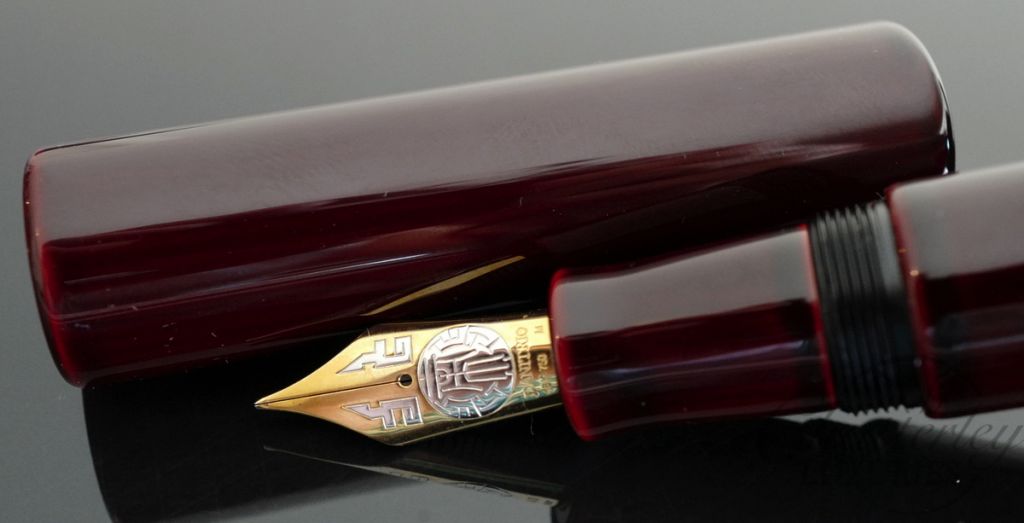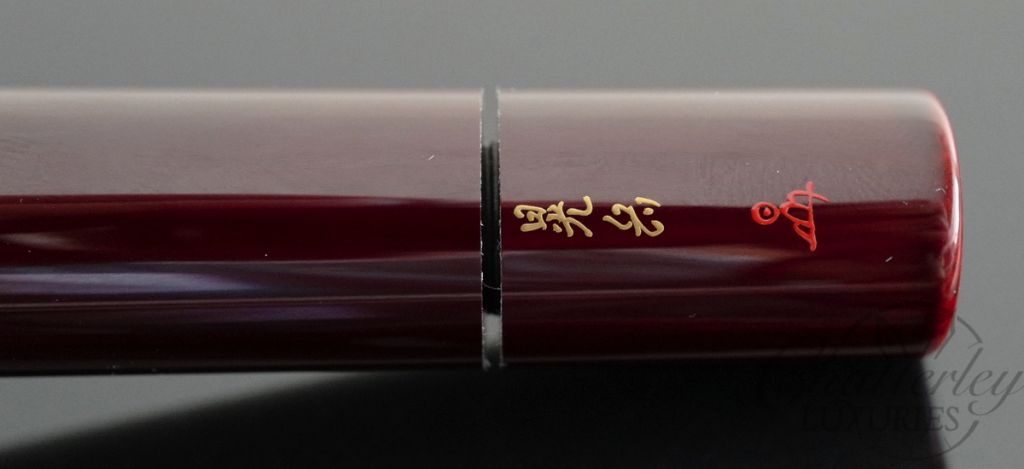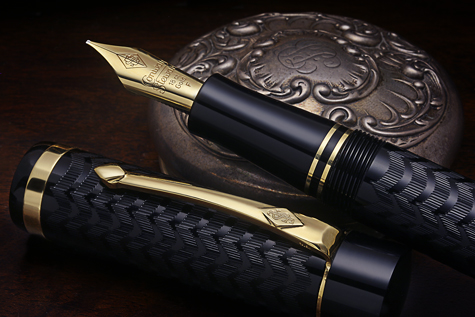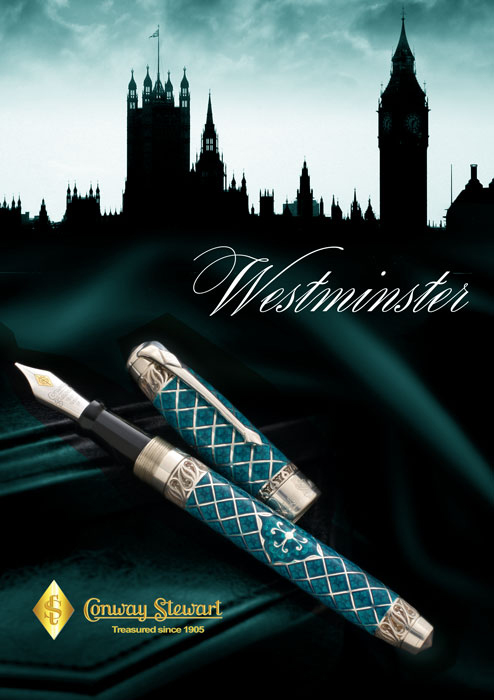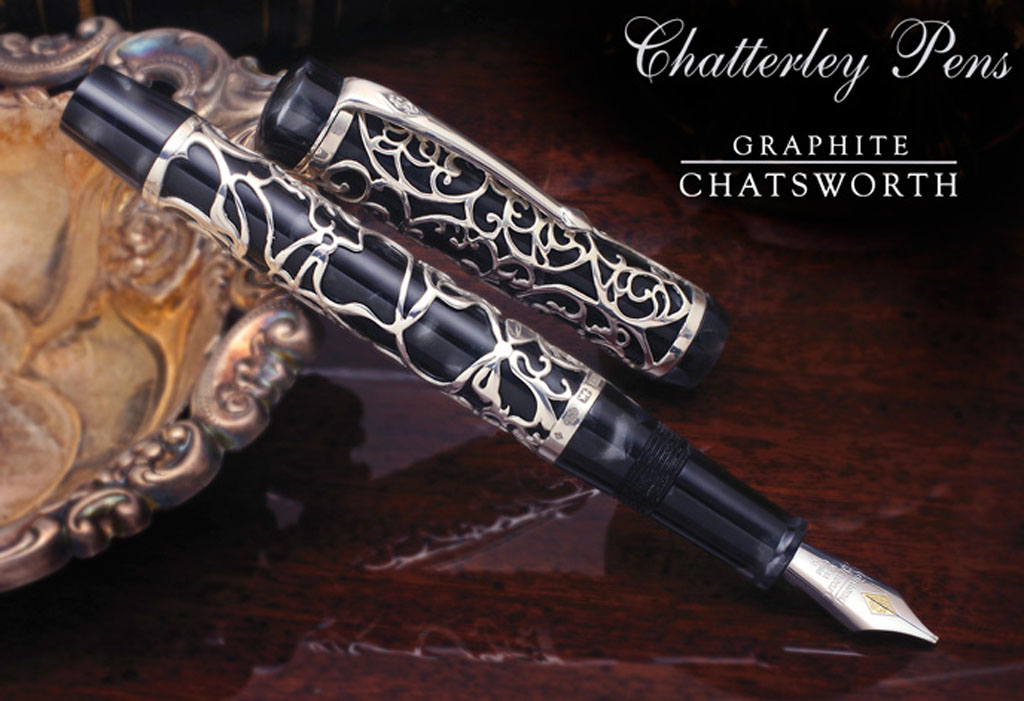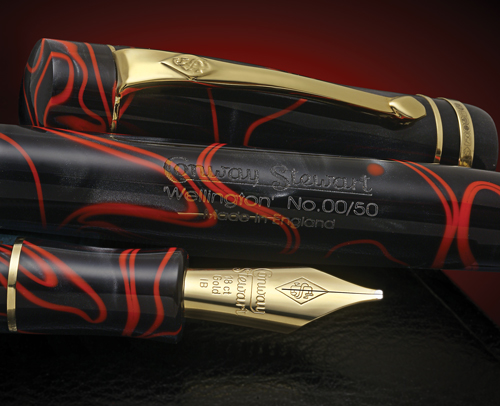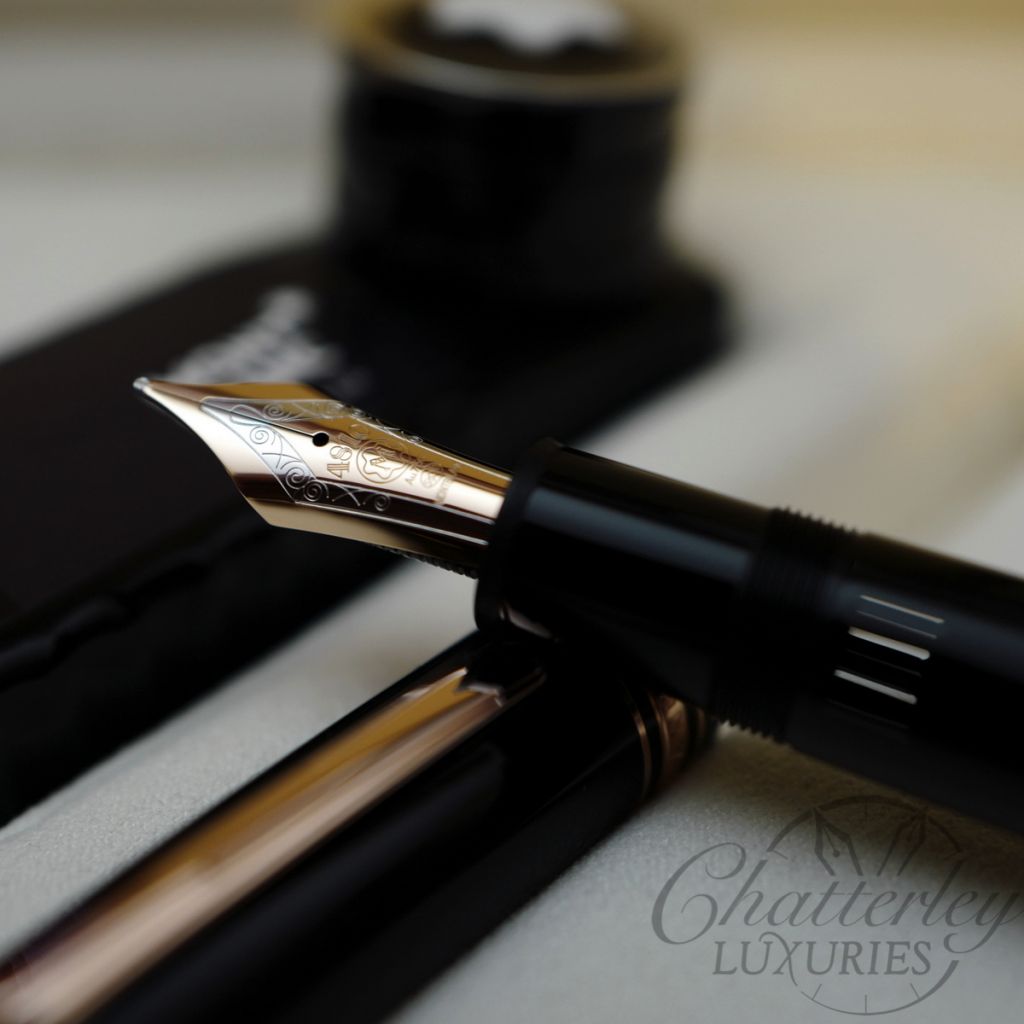Danitrio Tame-nuri on Shu (Red) on Genkai Fountain Pen

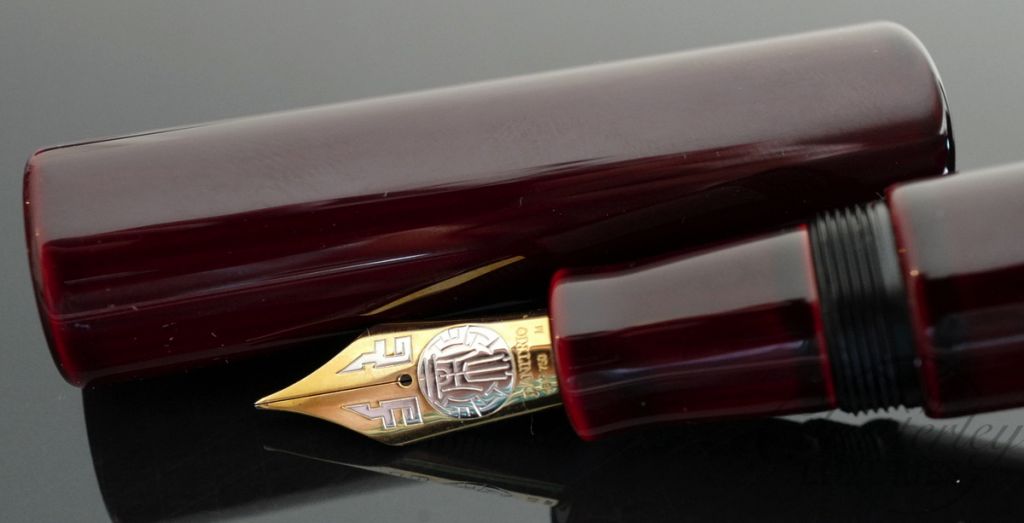
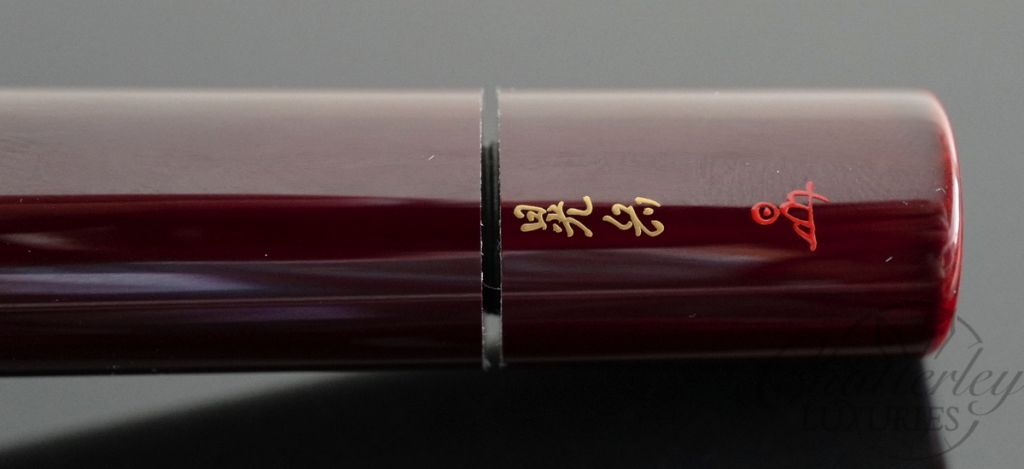
Danitrio makes beautiful pens using the Japanese skill and craftsmanship that has been mastered over the last few thousand of years. One of their lines of pens is the Hakkaku, which is an octagonal pen (8 sided faceted pen). The painting on the pen is superb and is deep burgundy color. This pen is filled via cartridge convertor and has an 18kt gold nib.
The base for Urushi paintings must be smooth and strong in order to have a good Urushi painting, which will last thousands of years. When the base is ready for painting, the first painting uses Sabi, Urushi mixed with polishing powders, as its base painting and call it Shita-nuri, the base painting. Then, Naka-nuri, the interim painting with Urushi is preparing for better Uwa-nuri, the finishing part of painting. The color of the interim painting has to be selected according to the color of the finishing part of painting. All these works are usually done by Nu-shi, craftsmen of Urushi paintings, painting 7 times in average and it takes 2-3 weeks before the Nu-shi can send back the pens to our Maki-e sh, who will do more Urushi painting works or Maki-e onto the pens.
Basically, Tame-nuri (Ta as tag, me as met ) uses Suki Urushi, transparent (actually rather translucent) Urushi painted over the colored Urushi, which was already painted as the interim layer. If the Shu (red) Urushi was painted as the base color, and then, the transparent Urushi is painted, it is called Shu Tame-nuri or Shu-dame. And if Kuro (black) Urushi was painted first, and then, the transparent Urushi was painted over it, it is called Kuro-dame. After the transparent Urushi was painted, the pen will be finished by Togidashi or Hana-nuri.
In the beginning of the process a decision is made whether this Tame-nuri should be finished with Togidashi or Hana-nuri, because different Urushi is used for different finishes. When finishing with Togidashi, oil free Urushi must be used, while oiled Urushi should be used for Hana-nuri. The reason for this is because oiled Urushi will help Urushi naturally shine, but it should not be used when it needs to be polished or burnished. And oil free Urushi is good for polishing and burnishing.
Togidahi uses different materials for polishing and burnishing repeatedly until the luster is brought out to the result they want. It is very time consuming, painstaking work. Hana-nuri means painted without those repeated working by polishing and burnishing in order to bring the luster out. Instead, Hana-nuri uses oiled Urushi in the beginning which helps the Urushi naturally shine after it is dried. Hana-nuri is a much simpler method of Urushi painting, though it won’t be as shiny as the Urushi finished with Togidashi. This natural shiny look is more popular than Togidashi especially among the tea ceremony society in Japan.
There is no 100% transparent Urushi. The clearest Urushi still has a light brown or amber color. The interesting thing with Tame-nuri is when the transparent Urushi is painted over the color Urushi, the color will change because this transparent Urushi is NOT 100% transparent like man-made “Urushi” which is 100% clear.
The specialness of Urushi is that the Urushi has a layer of membrane and the color of the layer will be lighter and shinier, and the Tame-nuri will look lighter and shinier within several months to a year.
Our Tame-nuri collection has become very popular, because of the matchless quality crafted by our Maki-e artist, Mr. Koichiro Okazaki.
Craftsmen call Urushi is a living thing. Its qualities differ even from the same trees, but quality is different from the trunk or branches. Different qualities from different trees or different areas or countries. Then, crude Urushi must be refined to make more than 10 different qualities of Urushi for different usage. Now craftsmen have to pay more than $600.00 per pound for genuine Japanese Urushi, $250.00 for Urushi imported from China. They use it in different occasions and different places, while manmade Urushi or plastic paint only cost a few dollars a pound. Genuine Urushi is like pure gold only for fine jewelry and pure gold is too expensive for cheap works with cheap materials.
The translucent Urushi has to be made with Japanese Urushi, because Urushi from China or Vietnam are all black when they sap from the trees and they can never be refined to be Suke-Urushi to be used for the above basic paintings.

